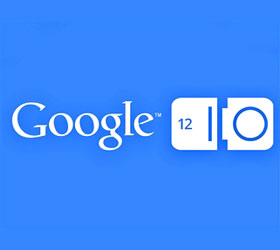As if HTML5 wasn’t confusing enough, now it seems that the standard will be surrounded by further confusion as the W3C and WHATWG have differing goals for the standard. Ask a random person what they think HTML5 is, and you will hardly get answers that make sense. It is already conflated with other web standard such as CSS3 and JavaScript. What HTML5 is, or perhaps we should say aims to be, is HTML done right. A new standard that does away with any issues of cross-browser incompatibilities; a standard that keeps up to date with the needs of web developers. The WHATWG started work on what we now call HTML5 since HTML4 was insufficient for modern web applications, had a number of flaws that needed correction, and the W3C was not active in developing a new standard. Since then, things have changed. Rather than develop a fixed HTML5 version / snapshot of a web standard, the WHATWG decided to rename it as the “HTML Living Standard”, and maintain a constantly changing standard that could be adapted by browsers as it develops. Some part of the standard are more more or less stable, while other territories are in constant development. This is where the W3C differs in approach. They wish to have a fixed snapshot of a standard clearly labelled HTML5. Essentially we now have two web standards for HTML where one is working towards a fixed goal and feature set, while the other is constantly being updated and fixed. While the most publicly hyped features of HTML5 have been the so-called “Flash killers”, web video and canvas, for many developers it is actually the simple fact that HTML5 has been defined in such a clear way that for any HTML5 code, they can be sure it looks and behaves the same across all browsers. This is because HTML5 defines not just what should be rendered in case of a perfectly coded website, but also how completely broken HTML code should render. Earlier each browser was designed to be able to cope with broken code, but such broken code could look different across browsers. However for every message about HTML5 and its magic abilities to heal all browser development woes, there is something like the Safari HTML5 showcase. On launch these demonstrations of “HTML5 and web standards” would only work on Safari, completely negating all the promotion of HTML5 as a standard that would end browser compatibility issues. Apple is hardly the only one guilty of this, take the recent Google Blogger and Opera fiasco. Opera users using Blogger started to receive a notice that Opera is incompatible with the Blogger editor and that Blogger users should switch to Google Chrome. Considering that Opera is an HTML5-compatible browser, the Blogger editor is an HTML5-based application, and Google is strongly pro-HTML5, why was this message even necessary? Isn’t this exactly the sort of thing HTML5 was meant to avoid? If Google does not have the resources to support all HTML5-capable browsers, what hope does a small company have. This is where the issue of HTML being a living standard also comes in. You cannot have a browser that implements the HTML living standard, because it is something that will eventually change. A compatible browser today is not compatible tomorrow, and the standard will move on leaving that browser incompatible. As a fixed standard, HTML5 on the other hand is something a browser can target and once implemented, it is compatible forever. This can be especially useful considering the diversity of hardware that aims to be web compatible these days. Desktops, laptops, even tablets and mobile can be updated to support the latest drivers, however televisions, IVI systems etc. might not be able to get a slew of updates, and these are devices that are likely to be retained for a long time as well. Both approaches are needed, and this isn’t a traditional software fork where two developments happen in different directions. HTML5 should finally just be a snapshot of the HTML Living Standard—with only minor fixes hopefully—while the WHATWG can continue working on bringing new features to the web. While the recent split of W3C and WHATWG might not have much of an impact for the average web developer, the already muddled web standards situation is not helped by such news. HTML5 and web standards are becoming an increasingly convoluted topic. It seems that to get a clear understanding of what exactly any new development in this field means you need a deep knowledge of the history of the topic and the intricacies surrounding it. This should not be a case, and alleviating these concerns should be as important for the standards bodies now as the developing the standards.



